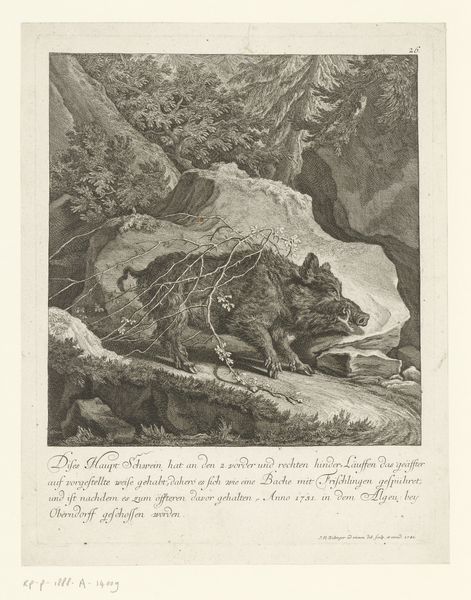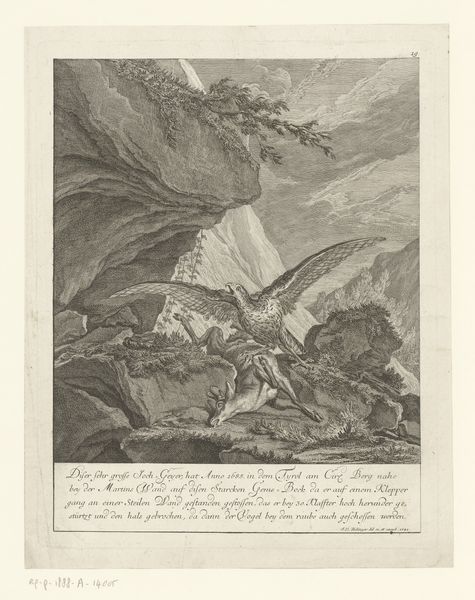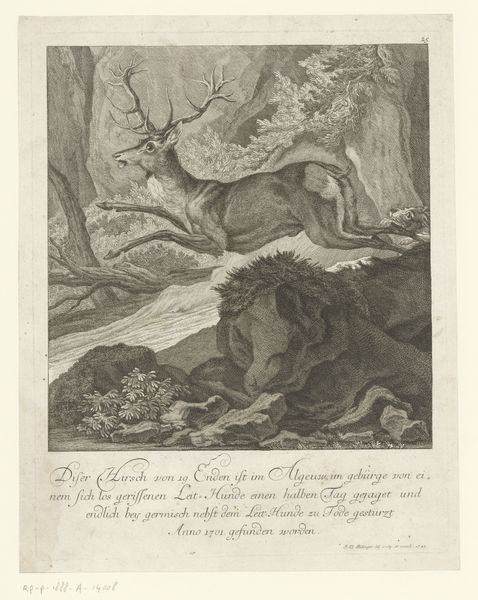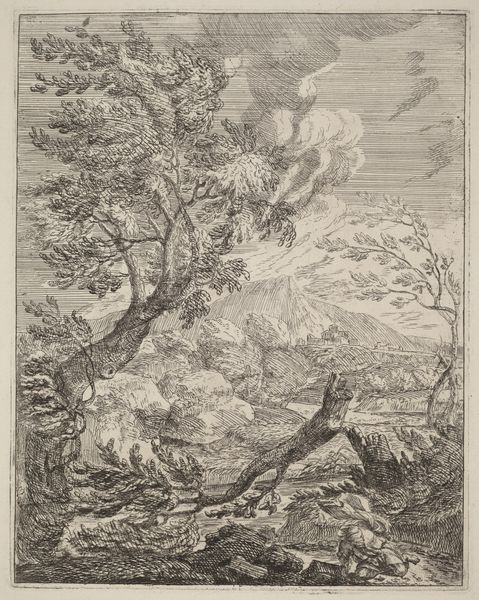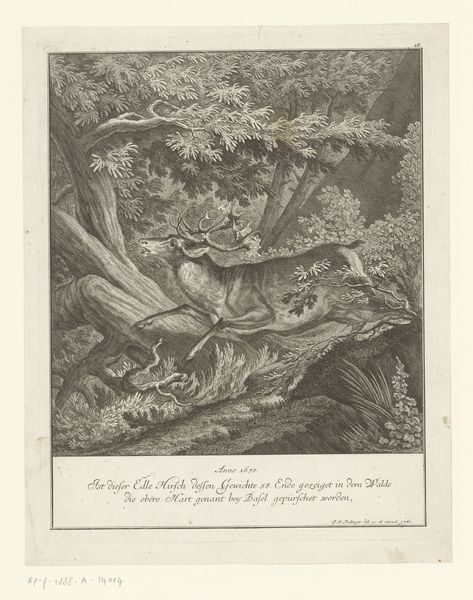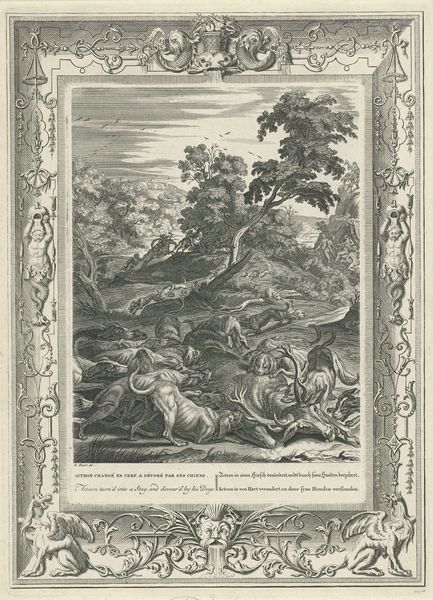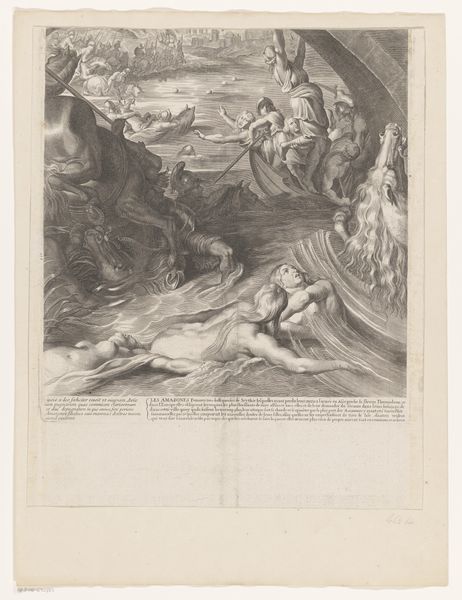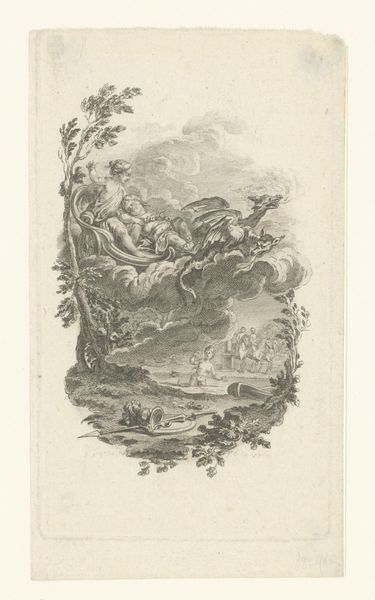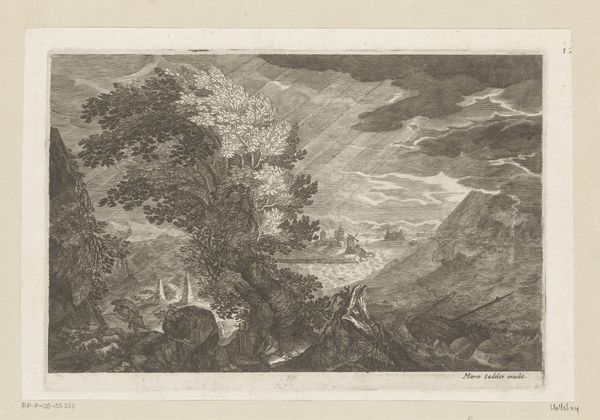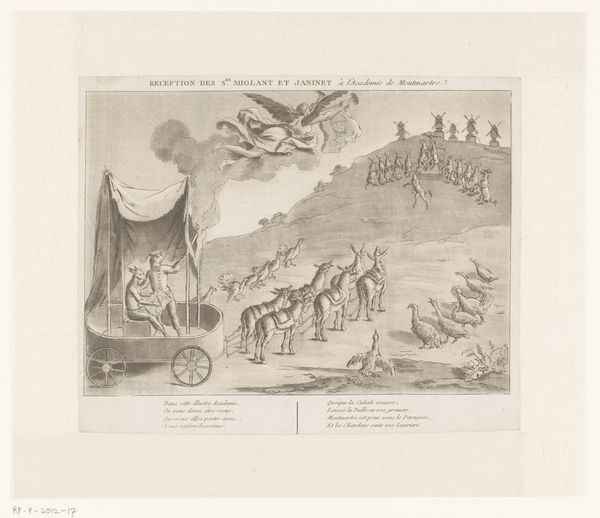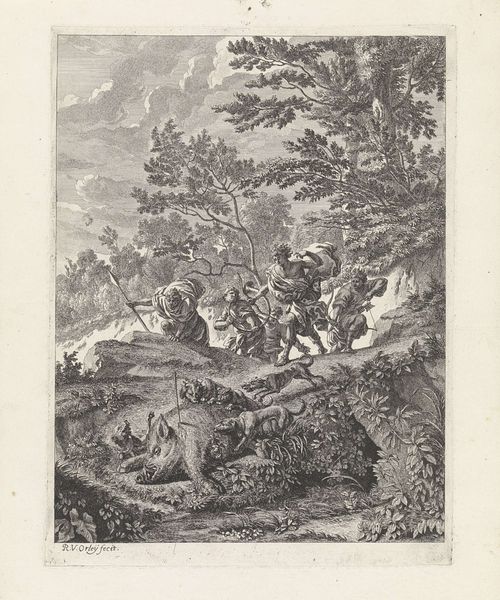
drawing, etching, paper
#
drawing
#
baroque
#
etching
#
old engraving style
#
landscape
#
paper
#
forest
#
realism
Dimensions: height 381 mm, width 303 mm
Copyright: Rijks Museum: Open Domain
Editor: Here we have Johann Elias Ridinger's "Bunzing en eekhoorn met hun sporen," or "Polecat and Squirrel with their tracks" made in 1751. It is an etching, so mostly black and white, with great detail of the forest environment. The composition of this reminds me of something out of a fairytale. I'm struck by how meticulously he rendered the natural world, even down to the footprints of the animals. What jumps out to you? Curator: Indeed. It presents a meticulousness that is striking. Observe how Ridinger employs a rigorously structured composition. The division between the scene of the animals and the taxonomic cataloging of the animal footprints generates a play between experience and observation. It posits nature as both immediate sensory impression and system of ordered knowledge. Editor: System of ordered knowledge? Curator: Consider the strategic deployment of line. Notice how the lines coalesce into highly detailed textures suggesting a range of forms. Each stroke adheres to a structure. In examining these animal footprints, does this element reinforce the themes of realism and objective documentation evident within the artwork? Editor: So, the way he uses line itself emphasizes that scientific approach, rather than, say, an emotional feeling about nature? Curator: Precisely. It suppresses a romantic interpretation in favour of portraying the empirical dimensions that shape knowledge production of natural sciences. What is your opinion? Is this artistic choice successful? Editor: I see what you mean! I initially read it as just a charming woodland scene, but now the formal elements are communicating a scientific intent. It's all about observation, meticulously recorded. Thanks. Curator: A necessary interrogation in the study of art consists of carefully considering how artistic techniques not only mirror subject matters, but advance them. The key is to look closely and think critically about the line, form, and organization in its pictorial field.
Comments
No comments
Be the first to comment and join the conversation on the ultimate creative platform.
